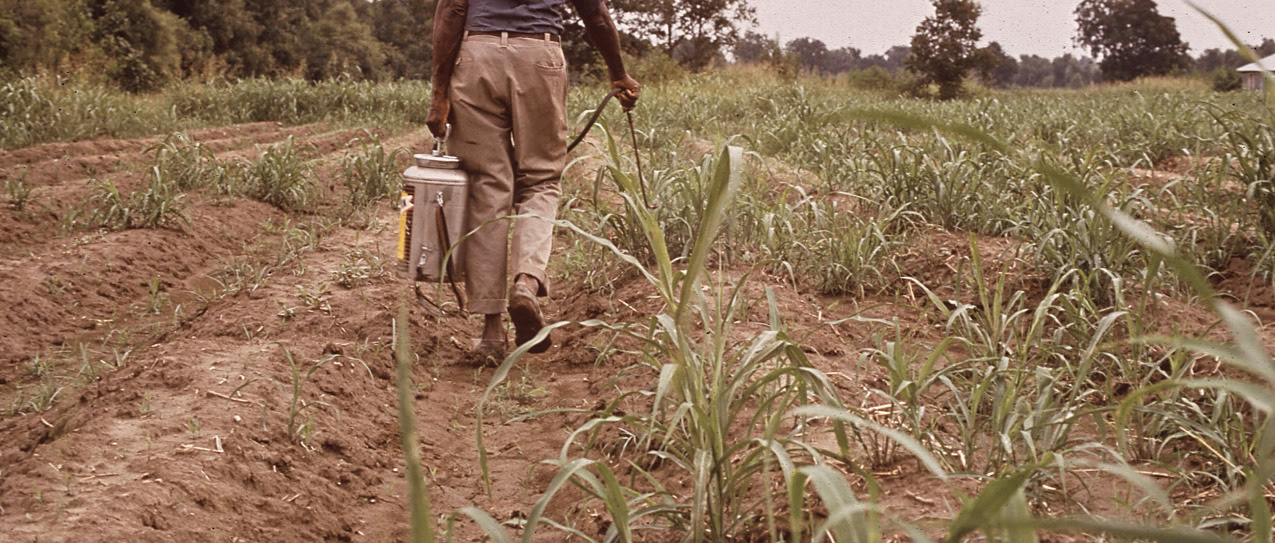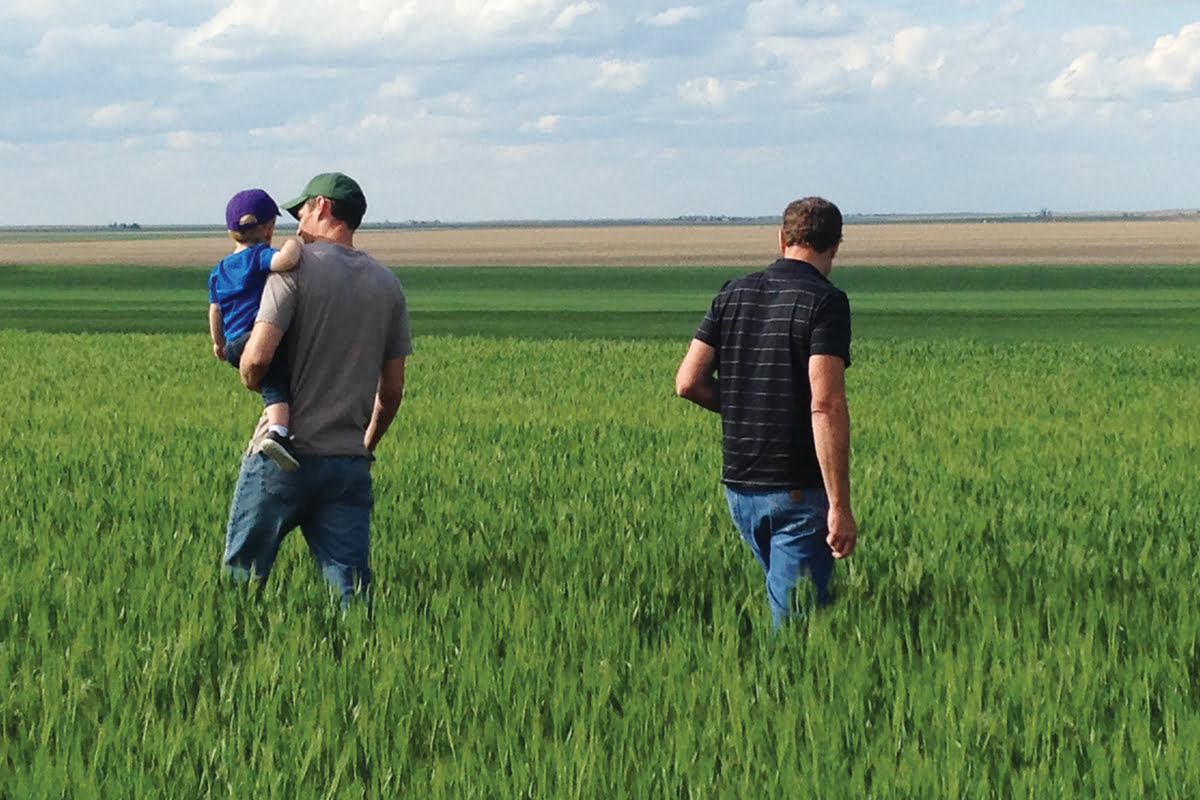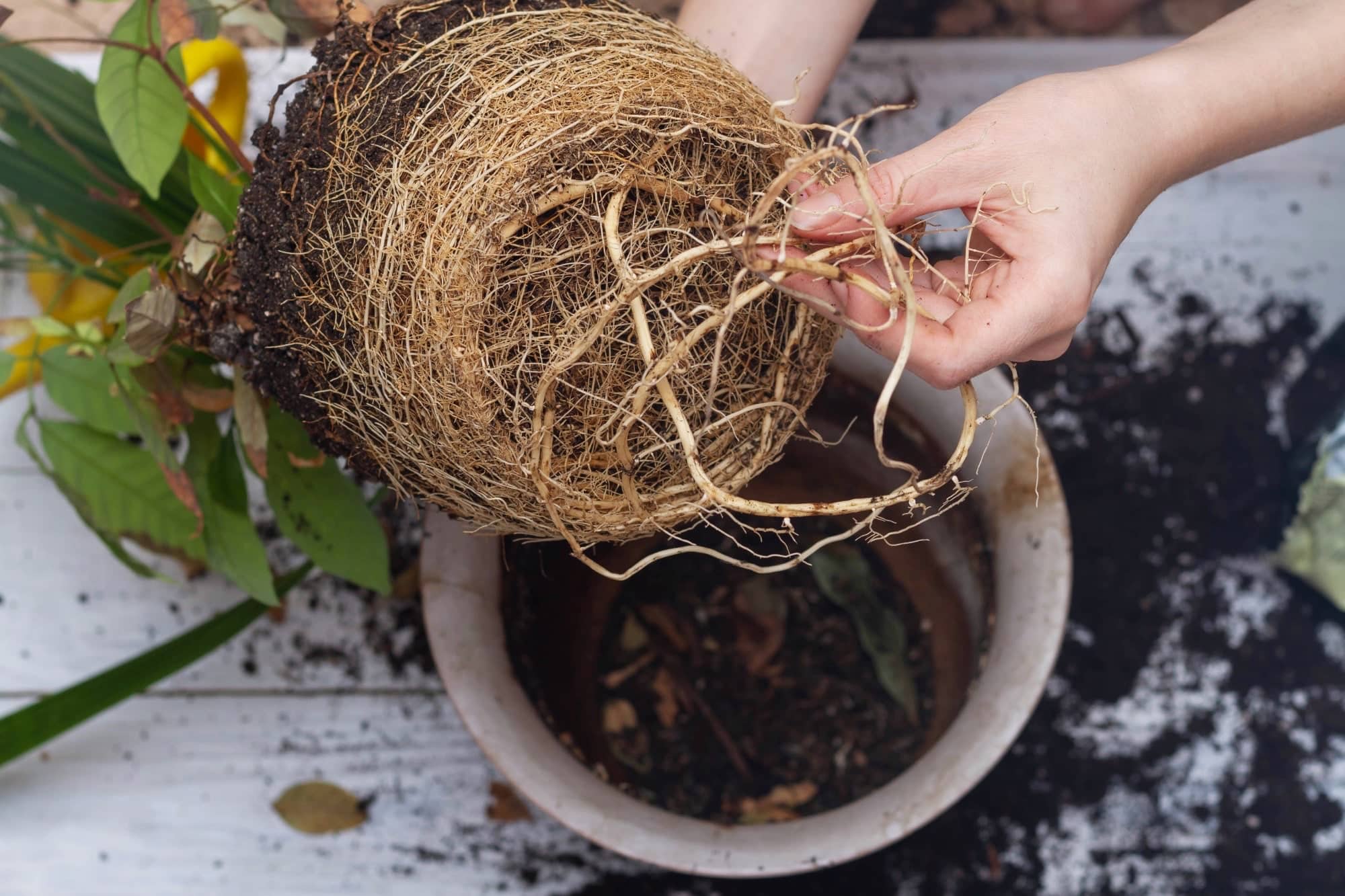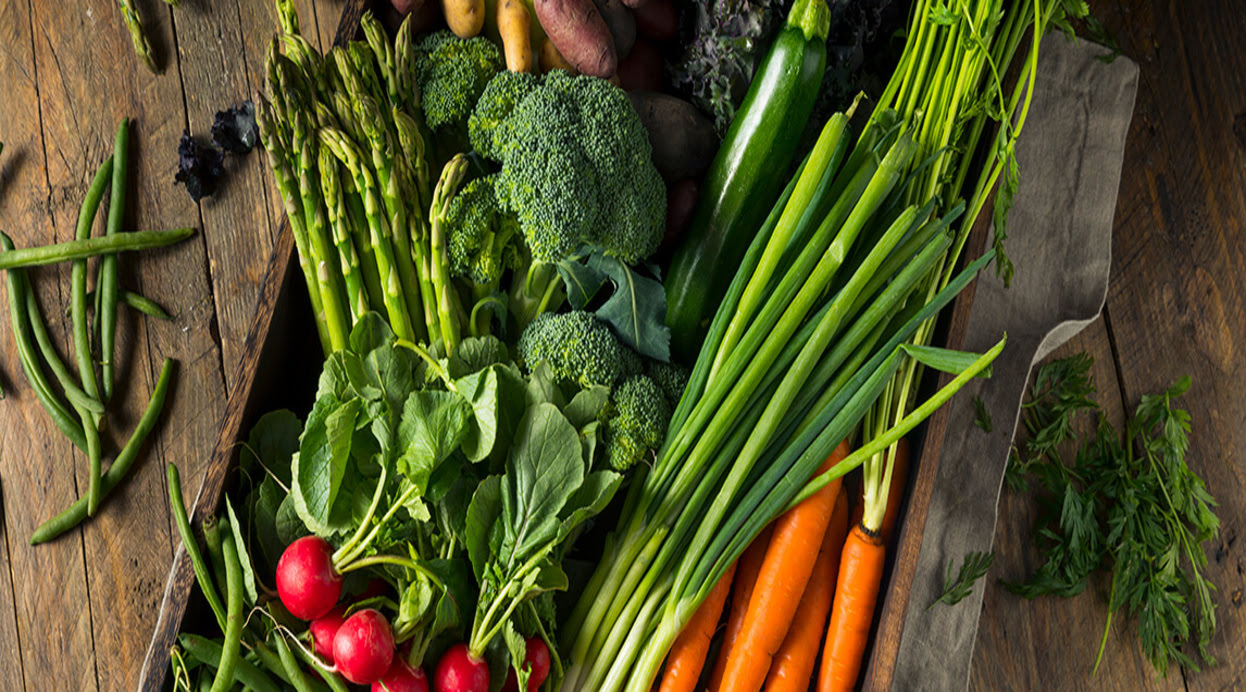Home>Gardening News and Trends>Latest News>Why Should Pesticides Be Banned


Latest News
Why Should Pesticides Be Banned
Modified: January 22, 2024
Discover the latest news on the controversial topic of pesticides and why there is a growing demand for their ban. Stay informed and make your voice heard.
(Many of the links in this article redirect to a specific reviewed product. Your purchase of these products through affiliate links helps to generate commission for Chicagolandgardening.com, at no extra cost. Learn more)
Table of Contents
Introduction
Pesticides have been used for decades as a means to control pests and increase agricultural productivity. However, there is growing concern surrounding the health and environmental impacts of these chemical substances. Pesticides are designed to kill or repel pests, but they can have unintended consequences on human health, biodiversity, and the overall ecosystem.
When pesticides are sprayed on crops, they can contaminate the air, soil, and water, leading to negative effects on both humans and the environment. Many pesticides have been linked to a range of health issues, including cancer, reproductive problems, neurological disorders, and respiratory ailments. The use of pesticides has also been implicated in the decline of pollinators, such as bees, which are crucial for ensuring food production and maintaining biodiversity. Moreover, the accumulation of pesticide residues in food poses additional risks to human health.
Given these concerns, many individuals and organizations advocate for the banning of pesticides, or at least stricter regulations on their use. The goal is to protect human health and the environment while finding sustainable and safer alternatives for pest management.
This article explores the health risks associated with pesticides, the environmental impacts they have, the effect on biodiversity and human exposure, as well as potential alternatives to their use. By examining these aspects, we can gain a deeper understanding of why many believe pesticides should be banned or heavily restricted.
Health Risks Associated with Pesticides
The use of pesticides has been linked to a range of health risks and adverse effects on human well-being. Many studies have shown an association between pesticide exposure and various health conditions, including cancer, reproductive problems, neurological disorders, and respiratory ailments.
One of the primary concerns is the potential carcinogenicity of certain pesticides. Numerous studies have found links between long-term exposure to specific pesticides and an increased risk of developing different types of cancer, such as leukemia, lymphoma, and prostate cancer. Pesticides can enter the body through inhalation, ingestion, or direct contact with the skin, and their toxic properties can disrupt normal cellular processes, leading to DNA damage and the development of cancerous cells.
In addition to cancer, pesticides have been associated with reproductive problems. Certain pesticides have been found to interfere with hormone levels and reproductive functions, leading to infertility, birth defects, and developmental disorders in children. These effects can occur as a result of exposure during pregnancy, breastfeeding, or even preconception.
Furthermore, pesticides can have neurotoxic effects on the human nervous system. Studies have suggested that prolonged exposure to certain pesticides can lead to neurological disorders such as Parkinson’s disease, Alzheimer’s disease, and cognitive impairments. The toxins in pesticides can disrupt neurotransmitter function and cause oxidative stress, leading to cellular damage in the brain.
Respiratory ailments are another concern associated with pesticide exposure. Inhalation of pesticide spray or dust particles can irritate the respiratory system and lead to conditions such as asthma, bronchitis, and other respiratory diseases. Agricultural workers and individuals living near areas where pesticides are heavily used are particularly vulnerable to these risks.
It is important to note that certain populations, such as children and pregnant women, may be more susceptible to the adverse effects of pesticide exposure due to their developing immune and reproductive systems. The cumulative effects of long-term exposure to multiple pesticides or exposure to a combination of pesticides and other environmental toxins can also amplify the risks.
Given the serious health risks associated with pesticides, it is crucial to implement measures to minimize human exposure and explore alternative approaches to pest control that prioritize safety and sustainability.
Environmental Impacts of Pesticides
Pesticides not only pose risks to human health but also have significant environmental impacts. When pesticides are applied to agricultural fields, they can contaminate the surrounding ecosystem, leading to detrimental effects on soil, water, air, and wildlife.
One of the major concerns is the contamination of soil. Pesticides can persist in the soil for long periods, affecting the soil’s quality and fertility. They can disrupt the balance of beneficial microorganisms, earthworms, and other soil organisms that play a crucial role in maintaining soil health and nutrient cycling. This can lead to a loss of soil fertility and decrease the overall productivity of the land.
The impact of pesticides on water is also significant. When pesticides are applied to crops, they can be washed off by rain or irrigation water, causing runoff into nearby water bodies. This runoff can contaminate rivers, lakes, and groundwater, leading to the pollution of drinking water sources and aquatic ecosystems. Pesticides in water can harm fish, amphibians, and other aquatic organisms, disrupting the delicate balance of the ecosystem.
Air pollution is another environmental consequence of pesticide use. During spraying, pesticides can evaporate and become airborne, creating a risk of inhalation for both humans and wildlife. In addition, pesticides can undergo chemical reactions in the atmosphere, leading to the formation of secondary pollutants that contribute to air pollution and climate change.
Pesticides also have a detrimental impact on wildlife and biodiversity. Many pesticides are broad-spectrum, meaning they can harm a wide range of organisms, not just the target pests. This can result in the unintended killing of beneficial insects, birds, and other wildlife, disrupting the natural food chain and ecological balance. The decline in pollinators, such as bees, due to pesticide use poses a significant threat to agricultural crops and ecosystem stability.
Furthermore, the excessive use of pesticides has contributed to the development of resistance in pest populations. Over time, pests can evolve and become resistant to certain pesticides, rendering them ineffective. This leads to a cycle of increased pesticide use and the development of more resistant pests, creating a reliance on toxic chemicals without solving the underlying problem.
Overall, the environmental impacts of pesticides highlight the need to adopt more sustainable and environmentally friendly approaches to pest management. By reducing pesticide use, promoting ecological farming practices, and exploring alternative methods, we can protect the environment and preserve biodiversity for future generations.
Effect on Biodiversity
The use of pesticides has had a profound impact on biodiversity, leading to a loss of species diversity and disrupting the delicate balance of ecosystems. Pesticides, especially those with broad-spectrum properties, can harm not only the targeted pests but also many non-target organisms, including beneficial insects, birds, and aquatic life.
One of the key concerns is the decline of pollinators, such as bees, butterflies, and other insects. These insects play a vital role in the pollination of flowering plants, including many agricultural crops. Pesticides can affect the central nervous system of pollinators, impairing their ability to navigate, feed, and reproduce. As a result, the decline in pollinator populations jeopardizes food production, reduces crop yields, and affects the overall biodiversity of plants and ecosystems.
In addition to pollinators, pesticides can harm other beneficial insects, such as predatory insects and parasitoids. These natural enemies of pests play a crucial role in regulating pest populations and maintaining ecological balance. When pesticides are used indiscriminately, these beneficial insects can be killed, leading to an increase in pest populations and the potential for more severe outbreaks.
Pesticides also have indirect effects on biodiversity through the contamination of soil and water. Soil organisms, including earthworms, bacteria, and fungi, are vital for nutrient cycling and maintaining soil health. Pesticides can disrupt the balance of these organisms, leading to a loss of biodiversity in the soil ecosystem and affecting soil fertility in the long term.
Water contamination from pesticide runoff can have severe consequences for aquatic life. Fish, amphibians, and other aquatic organisms can be directly affected by pesticide exposure, leading to reduced populations and even extinctions. Furthermore, pesticide-contaminated water can disrupt the balance of aquatic ecosystems, affecting the abundance of primary producers and leading to cascading effects throughout the food web.
The loss of biodiversity caused by pesticide use has far-reaching implications. Ecosystems depend on the diversity of species for stability, resilience, and the provision of ecosystem services. When populations of certain species decline or disappear due to pesticide exposure, it disrupts the intricate web of interactions within ecosystems and can have far-reaching consequences for the health and functionality of the ecosystem as a whole.
Preserving biodiversity is not only crucial for the conservation of fragile ecosystems but also essential for sustainable agriculture and food security. By reducing pesticide use and adopting more ecologically friendly farming practices, we can protect biodiversity and ensure the long-term health and resilience of our ecosystems.
Pesticide Residues in Food
The presence of pesticide residues in food is a significant concern for consumer health and safety. Pesticides are used extensively in agriculture to protect crops from pests and diseases, but residues can remain on fruits, vegetables, grains, and other food products even after they have been harvested and processed.
Residual pesticides can enter the food chain through various pathways, including soil, water, and air contamination during cultivation, as well as post-harvest treatments. When consumers consume food products containing pesticide residues, they can be exposed to potentially harmful chemicals.
The levels of pesticide residues in food are regulated by government agencies to ensure they are within acceptable limits deemed safe for consumption. However, concerns arise when the accumulation of multiple pesticide residues exceeds the established safety thresholds or when long-term exposure to low levels of residues occurs.
While the majority of food samples have pesticide residues below the legal limits, studies have detected residues in a significant portion of the food supply. Some studies have found that certain fruits and vegetables, such as strawberries, apples, spinach, and lettuce, often have higher levels of pesticide residues compared to other produce items.
The potential health risks of pesticide residues in food depend on several factors, including the toxicity of the specific pesticide, the amount consumed, and the individual’s overall diet and exposure to other toxic substances. Certain pesticides have been associated with various health issues, including cancer, neurotoxicity, hormone disruption, and developmental effects.
Special attention needs to be given to vulnerable groups, such as infants and young children, who may be more susceptible to the adverse effects of pesticide exposure. Their developing bodies and organs are more sensitive to toxic substances, and long-term exposure to low levels of pesticide residues can have cumulative effects on their health and development.
Reducing pesticide residues in food requires a combination of measures, including stricter regulations, improved monitoring and testing methods, and the promotion of organic farming practices. Organic farming, which prohibits the use of synthetic pesticides, offers an alternative to conventional agriculture and provides consumers with a choice to minimize pesticide exposure through their food choices.
Educating consumers about the importance of washing and proper food preparation techniques can also help reduce pesticide exposure. Additionally, supporting local and sustainable agricultural practices can reduce the need for long-distance transportation of produce, ensuring fresher food with potentially lower pesticide residue levels.
Pesticide residues in food highlight the importance of promoting sustainable farming practices and raising awareness about the potential risks associated with pesticide exposure. By advocating for safer and more sustainable agricultural methods, we can strive to minimize pesticide residues in our food and protect the health and well-being of consumers.
Human Exposure to Pesticides
Human exposure to pesticides can occur through various routes, including direct contact, inhalation, and ingestion. Individuals who are regularly exposed to pesticides include agricultural workers, pesticide applicators, and individuals living in close proximity to agricultural fields.
Agricultural workers have the highest risk of exposure due to their direct handling of pesticides during application, harvesting, and other farming activities. These workers can come into contact with pesticides through their skin, eyes, and respiratory system, leading to potential health risks. Lack of protective gear, inadequate training, and poor safety practices further increase their vulnerability to pesticide exposure.
Individuals who live near agricultural fields and orchards can also be exposed to pesticides through drift or spray drift. Pesticide drift occurs when airborne pesticide particles travel beyond the intended target area, potentially reaching nearby homes, schools, and communities. This exposure pathway can lead to inhalation or dermal contact with pesticide residues, posing risks to the health of those living in pesticide-prone areas.
Another common route of exposure is through the consumption of food and water contaminated with pesticide residues. As mentioned earlier, pesticide residues can persist in food products and can be ingested when consumed. This is a particularly concerning issue as it affects a wide population, including adults, children, and infants who may consume food with higher pesticide residue levels due to their smaller body weight.
Further, pesticide exposure can also occur in non-agricultural settings such as homes, schools, and public parks through the use of insecticides and herbicides for pest control and weed management. Indoor pesticide use, particularly in poorly ventilated spaces, can result in higher exposure levels as the chemicals may accumulate in the air and settle on surfaces.
Concerns regarding the potential health risks associated with pesticide exposure have prompted the implementation of safety regulations and guidelines. These aim to protect individuals from excessive exposure and ensure that the use of pesticides is conducted in a manner that minimizes risks.
Educating individuals about the potential dangers of pesticide exposure, including proper handling and use of protective equipment, is crucial in reducing risks. The use of safer alternatives, such as integrated pest management (IPM) techniques, which combine various strategies to control pests while minimizing pesticide use, can also help reduce human exposure.
It is important for regulatory agencies, industry stakeholders, and the community to work together to implement effective strategies that ensure the safety and well-being of individuals who may be exposed to pesticides. Through comprehensive risk assessments, proper safety measures, and continued research, we can strive to minimize human exposure to pesticides and protect the health of those in vulnerable populations.
Alternatives to Pesticides
As concerns about the environmental and health impacts of pesticides continue to rise, the need for safer and more sustainable pest management practices becomes evident. Fortunately, there are several alternatives to traditional pesticide use that can help mitigate these concerns while still effectively managing pests.
Integrated Pest Management (IPM) is one such approach that focuses on the prevention, monitoring, and control of pests through a combination of techniques. It aims to minimize the use of pesticides by utilizing biological controls, cultural practices, and other non-chemical methods. For example, introducing beneficial insects that feed on pests, practicing crop rotation and intercropping, and providing proper plant nutrition can all contribute to pest suppression.
Biopesticides are another alternative to synthetic chemical pesticides. These are derived from naturally occurring substances such as plants, bacteria, and fungi. Biopesticides can be effective in controlling pests while posing fewer risks to humans, non-target organisms, and the environment. They can be used in combination with other pest management strategies as part of an overall IPM plan.
Genetic engineering and biotechnology also offer potential alternatives to pesticides. Scientists are developing crops with built-in resistance to pests, reducing the need for chemical interventions. By introducing genes from naturally resistant plants or using biotechnological techniques to enhance plant defenses, crops can be more resilient and less vulnerable to pest damage.
Cultural practices and agricultural techniques can play a crucial role in pest management. Proper crop rotation, use of pest-resistant varieties, and maintaining healthy soil can help prevent the buildup of pest populations. Furthermore, optimizing irrigation and fertility practices can promote vigorous plant growth, making them more resilient to pest attacks.
Physical and mechanical methods can also be employed to control pests without the use of pesticides. These may include the use of barriers, traps, and physical removal of pests. For example, installing nets or screens to protect crops from insect pests or using mechanical devices to physically remove weeds can be effective in reducing pest populations.
Educating farmers, gardeners, and the general public about sustainable pest management practices is essential for the adoption and success of pesticide alternatives. Providing training and access to resources that promote Integrated Pest Management principles and innovative techniques can help individuals make informed decisions regarding pest control and reduce reliance on chemical pesticides.
Overall, alternatives to pesticides offer viable and effective solutions for managing pests while minimizing the negative impacts on human health and the environment. By embracing these alternatives and promoting sustainable farming practices, we can strike a balance between pest control and the long-term health of ecosystems and agricultural systems.
Economic Considerations of Pesticide Bans
While the environmental and health concerns associated with pesticides are significant, the economic considerations of implementing pesticide bans should also be taken into account. Pesticides play a crucial role in ensuring crop productivity and preventing yield losses from pests and diseases. Therefore, the potential impact of pesticide bans on agricultural systems and the economy as a whole must be carefully evaluated.
A ban on pesticides would likely have direct and indirect economic consequences for farmers and the agricultural industry. Without the use of pesticides, farmers may face increased crop losses due to pest infestations, resulting in reduced yields and lower incomes. This could lead to higher prices for consumers as the supply of certain crops diminishes.
Additionally, the cost of alternative pest management methods, such as integrated pest management (IPM) techniques or organic farming practices, may be higher than conventional pesticide use. These methods often require additional labor, specialized equipment, and increased monitoring efforts, which can lead to higher production costs for farmers.
Pesticide bans could also impact agricultural productivity on a larger scale, potentially reducing overall food production and agricultural exports. This could have negative consequences for the economy of countries heavily reliant on agriculture as a source of income and employment.
Furthermore, pesticide bans may influence the competitiveness of farmers in the global market. If pesticide use is prohibited in certain areas while allowed in others, it could create trade imbalances and distortions. Countries with stricter pesticide regulations may face challenges in meeting international quality and safety standards, affecting their ability to export agricultural products.
On the other hand, it is important to consider the potential long-term economic benefits of reducing pesticide use. By investing in sustainable farming practices and promoting alternatives to pesticides, such as organic farming, there may be opportunities for market differentiation and premium pricing for certified organic products. Consumers are increasingly seeking out pesticide-free and environmentally friendly food options, creating a potential niche market for farmers.
Furthermore, the reduction of pesticide use can lead to improved environmental and public health outcomes, potentially resulting in lower healthcare costs and a healthier workforce. This could have positive socioeconomic impacts in the long run.
It is crucial to strike a balance between addressing the environmental and health concerns associated with pesticides while also considering the economic implications. Transitioning to safer pest management practices requires careful planning, support, and investment in research and development. Government policies and incentives can play a vital role in helping farmers adapt to pesticide bans and encouraging the adoption of sustainable alternatives.
Ultimately, a comprehensive assessment of the economic impacts, as well as the potential benefits of reduced pesticide use, is necessary to make informed decisions and develop policies that safeguard both the environment and economic stability.
Conclusion
The use of pesticides has long been a widely accepted practice in agriculture, but growing concerns over the health and environmental impacts have sparked calls for their banning or stricter regulations. The health risks associated with pesticide exposure, such as cancer, reproductive problems, neurological disorders, and respiratory ailments, cannot be ignored. Similarly, the environmental impacts, including soil and water contamination, biodiversity loss, and the accumulation of pesticide residues in food, raise serious concerns.
However, it is important to acknowledge the economic considerations of implementing pesticide bans. Farmers heavily rely on pesticides to protect their crops and ensure productivity. The direct and indirect economic consequences of pesticide bans, including potential crop losses, increased production costs, and trade imbalances, must be taken into account.
Nonetheless, alternatives to pesticides, such as integrated pest management (IPM), biopesticides, and sustainable farming practices, offer viable solutions that can minimize the risks associated with synthetic chemical pesticides. By adopting these alternatives, farmers can still effectively manage pests while protecting human health and the environment.
Education and awareness play critical roles in promoting sustainable pest management practices and reducing pesticide use. Providing farmers with training, resources, and incentives to transition to safer alternatives can facilitate the adoption of more environmentally friendly approaches to pest control.
Ultimately, striking a balance between environmental protection, human health, and economic considerations is crucial. Government policies and regulations, along with support and investment in research and development, are necessary to drive the transition towards safer and more sustainable pest management practices.
By implementing comprehensive and thoughtful approaches, we can strive towards a future where agricultural practices prioritize the health and well-being of both humans and the environment. Through the adoption of alternative pest management methods and the promotion of sustainable farming practices, we can minimize the reliance on pesticides and move towards a more sustainable and resilient food system.










